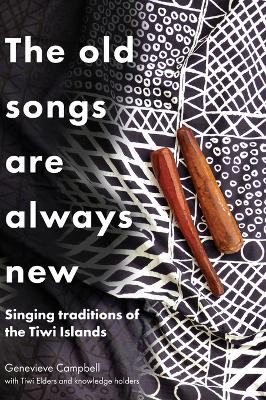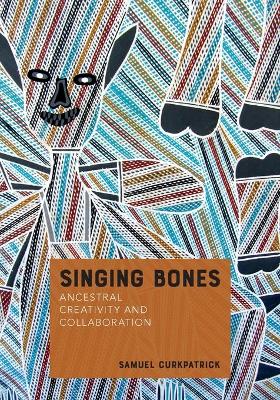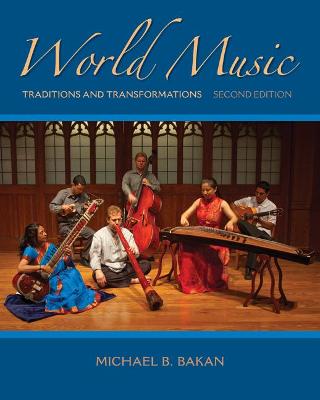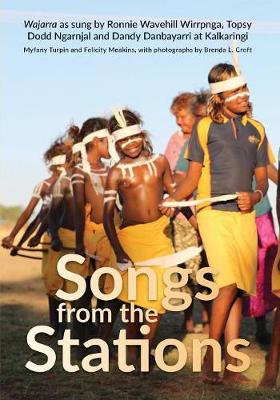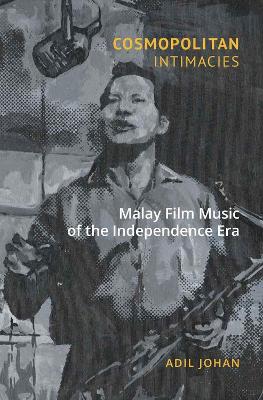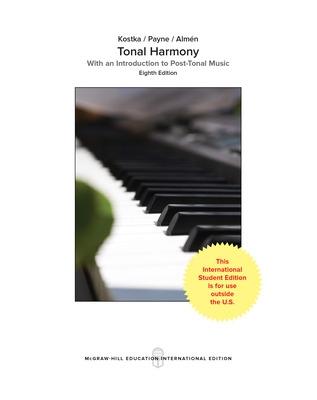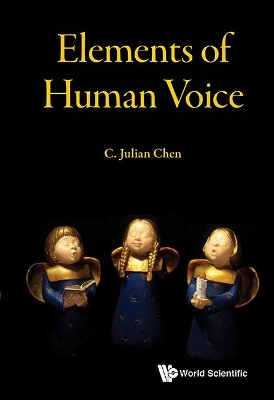World of Music
World of Music
Willoughby, David
McGraw-Hill Education - Europe
11/2011
384
Mole
Inglês
9780078025167
0078025168
628
Intends to provide students with a resource that can change the way they listen to music forever. This title begins with American folk, religious, jazz, popular, and ethnic music before introducing some world music and concluding with a thorough overview of Western classical music.
World of MusicTable of ContentsPart One: Preparation for ListeningChapter 1: Introducing the World of Music The Infinite Variety of Music: A Global Perspective The American Mainstream and Ethnic Diversity Music in CultureMusic Labels: Help or Hindrance? Artists and Artistry The Business of Music Manufacturing and MerchandisingPerformance of MusicMusic Publishing and Copyright Laws Music in Advertising Music in the CommunitySummaryChapter 2: The Nature of Music: Vocabulary for Listening and UnderstandingDefinitions of MusicMusic as a ScienceExpressive and Functional Qualities of MusicMusic Is Sound and SilenceMusic Moves through Time Music Is an Art Music Is Universal Music Is a Means of ExpressionMusic Can Be Functional Music Is a Changing ArtThe Creative, Performing, and Listening ExperiencesParticipating in Active ListeningThe Elements of Music 26Melody Harmony Rhythm Loudness Tone Quality Interaction of the ElementsTo Create a Style: Musical Concepts TextureGenres and Forms Melodic Growth and CharacterGoals for ListeningSummaryPart Two: Listening to American Music: Folk, Religious, Jazz, and PopChapter 3: Folk Music TraditionsGoals for ListeningThe Roots of Traditional Folk MusicTypes of Folk MusicThe BluesFolk Music: An Expanded ViewThe Urban Folk Revival Urban BluesSummary Chapter 4: Religious Music TraditionsGoals for ListeningThe Roots of American Protestant MusicPsalm Singing and Psalters Lining Out, Singing Schools, and the Shape-Note SystemTraditional Black Gospel MusicWhite Gospel Music: Revival and Evangelical HymnsPopular Contemporary StylesSummary Chapter 5: Jazz StylesGoals for ListeningWhat Is Jazz? The Jazz Style The Feel of Swing Instruments ImprovisationThe Roots of Jazz Jazz Styles New Orleans and Chicago Jazz Stride and Boogie Woogie Swing and Big Band Jazz Bebop Cool Jazz, Hard Bop, Soul Jazz, and Free Jazz Modern Jazz, Fusion, and Smooth Jazz SummaryChapter 6: Popular Music Goals for Listening The Definition and Scope of Popular Music Pre-Twentieth Century Twentieth Century and BeyondTin Pan AlleyVaudeville Musicals Film Radio and Recordings Country Music HillbillyCowboy Songs and Western Swing Bluegrass The Nashville Sound Contemporary Country Early African American Influences Motown Gospel Rhythm and Blues Soul Contemporary StylesRock Rap/Hip-Hop Other Genres SummaryPart Three: Listening to World MusicChapter 7: Music of the AmericasGoals for Listening Native American Music Style and Context Assimilation and PreservationEthnic Music in the United StatesReggae Latino Music Cajun and Zydeco MusicMusic of South America, Mexico, and the CaribbeanIndigenous Folk Culture Musical Instruments Folk Songs and Dances Religious Influences Summary Chapter 8: Music Beyond the AmericasGoals for ListeningMusic in India Classical Music Popular Music Music in Japan The Performance Context Musical GenresGagaku Kabuki Koto, Shakuhachi, and ShamisenMusic in Sub-Saharan Africa Music in Context Instruments Rhythm Popular MusicMusic in Eastern Europe Indonesian Gamelan and Popular Music Jewish Music Cultural Context Liturgical Music Klezmer MusicCeltic Music Instruments Artists Altan Clannad Solas The ChieftainsSummary Part Four: Listening to Western Classical MusicChapter 9: Music to 1600 Goals for ListeningThe Beginnings of Western Music (until 1450) Gregorian Chant Notation Polyphonic Music The Renaissance (1450-1600) Choral and Vocal MusicMass Motet Madrigal Instrumental Music The Reformation Featured Composers Josquin des Prez Giovanni Pierluigi da Palestrina Giovanni Gabrieli Summary Chapter 10: Music of the Baroque Period (1600-1750)Goals for ListeningMusical Characteristics Texture Major-Minor Tonal System Continuo Word Painting Other Musical Characteristics Instruments Musical Forms and Genres Opera Orchestral Works Chamber Music Keyboard Works Choral MusicFeatured ComposersJohann Sebastian Bach George Frideric HandelOther Notable ComposersSummaryChapter 11: Music of the Classic Period (1750-1820)Goals for ListeningMusical CharacteristicsInstrumentsGenres Instrumental Vocal, Choral, and Opera Forms Sonata Form Theme and Variations Minuet and Trio RondoFeatured Composers Franz Joseph Haydn Wolfgang Amadeus Mozart Ludwig van BeethovenSummaryChapter 12: Music of the Romantic Period (Nineteenth Century)Goals for Listening Musical Characteristics Forms and Genres Instrumental Forms and Genres Opera and Ballet Keyboard Forms and Genres SongsFeatured ComposersJohannes Brahms Frederic Chopin Felix Mendelssohn Franz Schubert Pyotr I'yich Tchaikovsky Giuseppe Verdi Richard Wagner Other Notable Composers SummaryChapter 13: Music of the Twentieth CenturyGoals for Listening General CharacteristicsStylistic Developments and Featured Composers Impressionism: Claude Debussy Experimental Music: Igor Stravinsky Atonal Music and Serialism: Arnold Schoenberg Electronic Music: Edgard Varese Chance Music: John Cage Nationalism: Bela Bartok Nationalism: Charles Ives and Aaron Copland Additional American Composers Amy Cheney Beach Ruth Crawford Ellen Taaffe Zwilich Ulysses Kay Henry Cowell George Gershwin William Grant Still Neoclassical Music Minimalism Traditional SoundsSummaryAppendix A: A List of Recommended DVDs and Videos Supporting the Philosophy of The World of MusicAppendix B: Classification of Instruments according to Methods of Tone ProductionGlossary Bibliography Credits Index
Este título pertence ao(s) assunto(s) indicados(s). Para ver outros títulos clique no assunto desejado.
Intends to provide students with a resource that can change the way they listen to music forever. This title begins with American folk, religious, jazz, popular, and ethnic music before introducing some world music and concluding with a thorough overview of Western classical music.
World of MusicTable of ContentsPart One: Preparation for ListeningChapter 1: Introducing the World of Music The Infinite Variety of Music: A Global Perspective The American Mainstream and Ethnic Diversity Music in CultureMusic Labels: Help or Hindrance? Artists and Artistry The Business of Music Manufacturing and MerchandisingPerformance of MusicMusic Publishing and Copyright Laws Music in Advertising Music in the CommunitySummaryChapter 2: The Nature of Music: Vocabulary for Listening and UnderstandingDefinitions of MusicMusic as a ScienceExpressive and Functional Qualities of MusicMusic Is Sound and SilenceMusic Moves through Time Music Is an Art Music Is Universal Music Is a Means of ExpressionMusic Can Be Functional Music Is a Changing ArtThe Creative, Performing, and Listening ExperiencesParticipating in Active ListeningThe Elements of Music 26Melody Harmony Rhythm Loudness Tone Quality Interaction of the ElementsTo Create a Style: Musical Concepts TextureGenres and Forms Melodic Growth and CharacterGoals for ListeningSummaryPart Two: Listening to American Music: Folk, Religious, Jazz, and PopChapter 3: Folk Music TraditionsGoals for ListeningThe Roots of Traditional Folk MusicTypes of Folk MusicThe BluesFolk Music: An Expanded ViewThe Urban Folk Revival Urban BluesSummary Chapter 4: Religious Music TraditionsGoals for ListeningThe Roots of American Protestant MusicPsalm Singing and Psalters Lining Out, Singing Schools, and the Shape-Note SystemTraditional Black Gospel MusicWhite Gospel Music: Revival and Evangelical HymnsPopular Contemporary StylesSummary Chapter 5: Jazz StylesGoals for ListeningWhat Is Jazz? The Jazz Style The Feel of Swing Instruments ImprovisationThe Roots of Jazz Jazz Styles New Orleans and Chicago Jazz Stride and Boogie Woogie Swing and Big Band Jazz Bebop Cool Jazz, Hard Bop, Soul Jazz, and Free Jazz Modern Jazz, Fusion, and Smooth Jazz SummaryChapter 6: Popular Music Goals for Listening The Definition and Scope of Popular Music Pre-Twentieth Century Twentieth Century and BeyondTin Pan AlleyVaudeville Musicals Film Radio and Recordings Country Music HillbillyCowboy Songs and Western Swing Bluegrass The Nashville Sound Contemporary Country Early African American Influences Motown Gospel Rhythm and Blues Soul Contemporary StylesRock Rap/Hip-Hop Other Genres SummaryPart Three: Listening to World MusicChapter 7: Music of the AmericasGoals for Listening Native American Music Style and Context Assimilation and PreservationEthnic Music in the United StatesReggae Latino Music Cajun and Zydeco MusicMusic of South America, Mexico, and the CaribbeanIndigenous Folk Culture Musical Instruments Folk Songs and Dances Religious Influences Summary Chapter 8: Music Beyond the AmericasGoals for ListeningMusic in India Classical Music Popular Music Music in Japan The Performance Context Musical GenresGagaku Kabuki Koto, Shakuhachi, and ShamisenMusic in Sub-Saharan Africa Music in Context Instruments Rhythm Popular MusicMusic in Eastern Europe Indonesian Gamelan and Popular Music Jewish Music Cultural Context Liturgical Music Klezmer MusicCeltic Music Instruments Artists Altan Clannad Solas The ChieftainsSummary Part Four: Listening to Western Classical MusicChapter 9: Music to 1600 Goals for ListeningThe Beginnings of Western Music (until 1450) Gregorian Chant Notation Polyphonic Music The Renaissance (1450-1600) Choral and Vocal MusicMass Motet Madrigal Instrumental Music The Reformation Featured Composers Josquin des Prez Giovanni Pierluigi da Palestrina Giovanni Gabrieli Summary Chapter 10: Music of the Baroque Period (1600-1750)Goals for ListeningMusical Characteristics Texture Major-Minor Tonal System Continuo Word Painting Other Musical Characteristics Instruments Musical Forms and Genres Opera Orchestral Works Chamber Music Keyboard Works Choral MusicFeatured ComposersJohann Sebastian Bach George Frideric HandelOther Notable ComposersSummaryChapter 11: Music of the Classic Period (1750-1820)Goals for ListeningMusical CharacteristicsInstrumentsGenres Instrumental Vocal, Choral, and Opera Forms Sonata Form Theme and Variations Minuet and Trio RondoFeatured Composers Franz Joseph Haydn Wolfgang Amadeus Mozart Ludwig van BeethovenSummaryChapter 12: Music of the Romantic Period (Nineteenth Century)Goals for Listening Musical Characteristics Forms and Genres Instrumental Forms and Genres Opera and Ballet Keyboard Forms and Genres SongsFeatured ComposersJohannes Brahms Frederic Chopin Felix Mendelssohn Franz Schubert Pyotr I'yich Tchaikovsky Giuseppe Verdi Richard Wagner Other Notable Composers SummaryChapter 13: Music of the Twentieth CenturyGoals for Listening General CharacteristicsStylistic Developments and Featured Composers Impressionism: Claude Debussy Experimental Music: Igor Stravinsky Atonal Music and Serialism: Arnold Schoenberg Electronic Music: Edgard Varese Chance Music: John Cage Nationalism: Bela Bartok Nationalism: Charles Ives and Aaron Copland Additional American Composers Amy Cheney Beach Ruth Crawford Ellen Taaffe Zwilich Ulysses Kay Henry Cowell George Gershwin William Grant Still Neoclassical Music Minimalism Traditional SoundsSummaryAppendix A: A List of Recommended DVDs and Videos Supporting the Philosophy of The World of MusicAppendix B: Classification of Instruments according to Methods of Tone ProductionGlossary Bibliography Credits Index
Este título pertence ao(s) assunto(s) indicados(s). Para ver outros títulos clique no assunto desejado.



